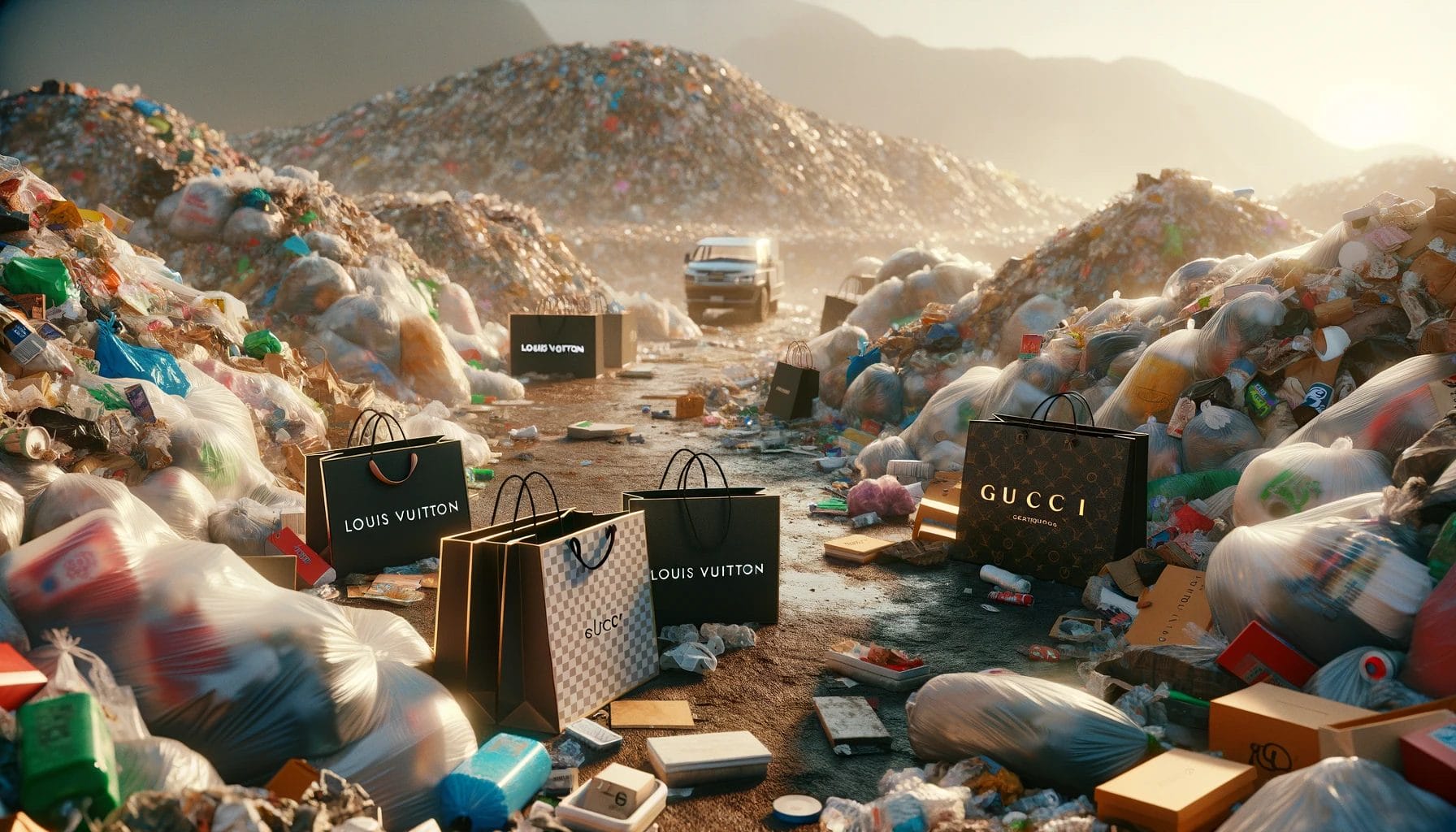With growing liberation and privatisation, materialism seems to reign supreme, a growing number of individuals, particularly among Gen Z, are taking a step back to evaluate the real cost of consumerism—not just on their wallets but on the planet. Inspired by personal journeys shared across various platforms, including social media and personal blogs, many are reflecting on their consumption habits and striving for a more sustainable and mindful lifestyle.
For many, the attraction to material goods, from the latest tech gadgets to fast fashion, is fueled by relentless advertising and the pressure to keep up with societal trends. A study by the Environmental Protection Agency (EPA) highlights that the average American generates about 4.9 pounds of trash per day, with a significant portion stemming from packaging and disposable products. This statistic underscores the environmental impact of our consumption habits, prompting a reevaluation of our relationship with material goods.
The Drawbacks of Excessive Consumption
The cycle of buying and discarding not only strains our finances but also has a profound environmental impact. The fashion industry, for example, is responsible for about 10% of global carbon emissions, as reported by the United Nations Environment Programme. Additionally, the increasing demand for new tech products contributes to e-waste, which poses significant environmental and health risks.
The relentless cycle of purchase and disposal is more than just a drain on our personal finances—it casts a long shadow over the environment. One stark example is the fashion industry, which, according to the United Nations Environment Programme, is accountable for approximately 10% of global carbon emissions. This startling figure places the industry as a major contributor to climate change, rivaling even the emissions of some industrial sectors.
The fashion sector's carbon footprint is compounded by its water usage and pollution. The production of textiles consumes vast quantities of water, while the dyeing and treatment processes release harmful chemicals into rivers and oceans, affecting aquatic life and water quality. Fast fashion accelerates these issues, with the rapid turnover of clothing leading to enormous waste. A significant portion of produced garments ends up in landfills or incinerators, where they release methane, a potent greenhouse gas, as they decompose. The push towards reducing these emissions is critical, with some experts suggesting the need for the fashion industry to slash its carbon output by more than 50% by 2030 to align with global climate goals.
Tech Industry and E-Waste Challenges
Similarly distressing is the burgeoning issue of electronic waste (e-waste), exacerbated by the tech industry's rapid obsolescence cycle. As newer models of gadgets continually flood the market, older versions become obsolete, contributing to a growing pile of e-waste. This waste is not only a lost resource but also a source of contamination, as it contains hazardous materials like lead, mercury, and cadmium. These substances pose severe risks to environmental health and safety when they leach into soil and groundwater. Proper recycling and disposal of e-waste are paramount to mitigating these risks, yet the current rates of e-waste recycling remain woefully inadequate.
Addressing these drawbacks necessitates a shift towards more sustainable consumption practices. For the fashion industry, this means embracing slow fashion—prioritizing quality and longevity over quantity and trends. Consumers can contribute by choosing brands that adopt sustainable practices, opting for second-hand or vintage clothing, and reducing overall consumption. In the realm of technology, extending the lifespan of devices, supporting right-to-repair initiatives, and responsibly recycling e-waste are steps in the right direction.
Ultimately, tackling the environmental impact of excessive consumption will require concerted efforts from individuals, businesses, and governments. Policy measures, such as stricter regulations on waste management and incentives for sustainable practices, can drive industry-wide changes. Meanwhile, innovation in materials and manufacturing processes can lower the environmental footprint of the products we consume. As awareness grows, so does the collective responsibility to act, underscoring the importance of making informed choices that support a more sustainable and equitable world.
Embracing a Minimalist Approach
Minimalism, a lifestyle choice focusing on living with less, is gaining traction among young adults seeking to escape the consumerist trap. By prioritizing needs over wants, individuals are finding freedom from the endless cycle of consumption and discovering the joy in simplicity. This approach not only benefits personal well-being but also contributes to a more sustainable world by reducing waste and conserving resources.
Adopting a sustainable lifestyle goes beyond minimizing personal belongings; it encompasses conscious choices that reduce one's environmental footprint. For instance, choosing second-hand or ethically made clothing, supporting local businesses, and opting for durable goods over disposable ones are practical steps toward sustainable living. Furthermore, embracing digital platforms for education and entertainment can significantly cut down on physical clutter and waste.
The Role of Social Media in Shaping Perspectives
Social media plays a dual role in this narrative. On one hand, it perpetuates the desire for new and trendy items; on the other, it serves as a platform for raising awareness about the impacts of consumerism and promoting sustainable practices. Influencers and content creators advocating for minimalism and eco-friendly living are inspiring their followers to rethink their consumption patterns and make more responsible choices.
As society grapples with the consequences of unchecked consumerism, the voices of young adults advocating for minimalism and sustainability are crucial in driving change. By sharing their journeys and insights, they are not only challenging the status quo but also paving the way for a more conscious and sustainable future. As we move forward, it's imperative to continue the conversation about the true cost of our consumption habits and the steps we can take, both big and small, toward a more sustainable lifestyle.

